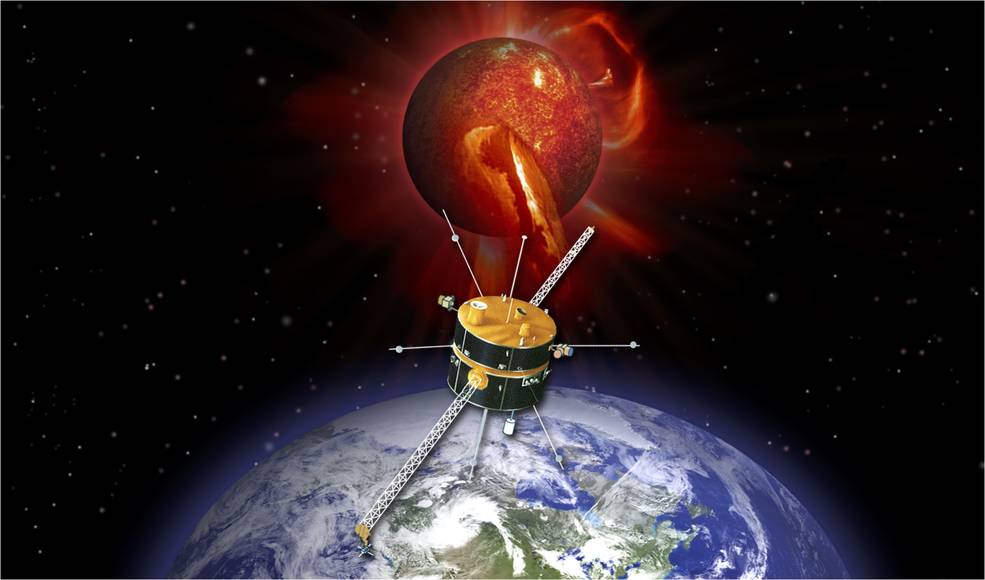This content has been archived. It may no longer be relevant

Credits: NASA’s Goddard Space Flight Center
In the early 1980s, heliophysicists needed answers. They wanted to learn how to protect astronauts and assets around Earth from the potentially damaging space weather that results from our tumultuous Sun. To do that, they needed to better understand the constantly changing, dynamic space system around our planet — including measurements of the properties of the solar wind, the constant billowing of charged particles coming off the Sun. Answering this call was the aptly named Wind mission, which launched 25 years ago, on Nov. 1, 1994. Wind currently orbits at the first Lagrange point, L1, a spot of gravitational balance between the Sun and Earth, which allows the spacecraft to face the Sun at all times.
For the past 25 years, Wind has been studying the heated gas of charged particles — known as plasma — that fills the space between planets. The observations have allowed scientists to gain an understanding of the solar wind and its interactions with the near-Earth environment. Wind data has been instrumental in elucidating solar wind properties, intense space weather, and interstellar space, as well as assisting other spacecraft that have gone on to study the Sun up close.
So far, Wind’s data has been used in over 5,000 publications, and supported almost 100 graduate degrees. It has been steadily taking data for 25 years, and has enough fuel at its current orbit to last until 2074. Wind’s scientific results are prodigious — here are some of the coolest results from the last 25 years:
Read the Complete Article

